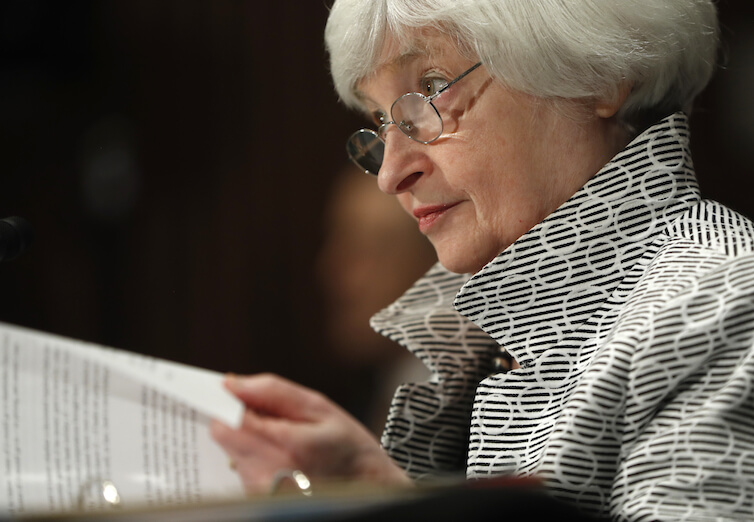
The disoriented series of economic events over the past decade may seem unprecedented, but there are very few new things under the macroeconomic sun. Not even the upcoming unwinding of the Federal Reserve’s bond buying spree that it went on to help fight the Great Recession is something brand new.
The Federal Open Markets Committee—the policymaking arm of the Federal Reserve System—is expected to announce its plans to wind down its balance sheet, built up during its large-scale asset purchasing programs beginning in 2009 during the depths of the Great Recession. By shedding the assets it bought via its “quantitative easing” programs, the U.S. central bank will be reducing the amount of excess reserves—those over and above the required amount—that it requires banks to hold with it. But this is not the first time that excess reserves were drawn down. Just as this unwinding will soon occur less than a decade after the end of the Great Recession, the previous one happened in the shadow of the Great Depression.
A new paper looks at the rise and fall of excess reserves in the aftermath of the 20th century’s largest recession. Recently released as a National Bureau of Economic Research working paper, the research is by economists Matthew Jaremski of Colgate University and Gabriel Mathy of American University. Interestingly, the excess reserves in the 1930s were not directly created by the Federal Reserve system, as they were during the response to the Great Recession. Instead, the two economists find that the excess reserves were primarily created by increased flows of gold into the United States. Neither the Federal Reserve nor the U.S. Treasury Department intervened in foreign exchange markets to “sterilize” the effects of the gold flows, which means those reserves were implicitly created by government policy.
Jaremski and Mathy note that the financial system at that time was set up so that increases in gold inflow would necessarily lead to increases in bank reserves, as private gold could no longer be used as money, but it wasn’t necessarily clear how much these flows increased excess reserves. What Jaremski and Mathy find is that there was a very strong flow of gold into to excess reserves. A 10 percent increase in gold flow was associated with an 8.8 percent increase in excess reserves. In other words, unsterilized gold flowing into the United States was an effective, and a kind of proto-quantitative, easing program.
The unwinding of that program was similarly a passive affair when it came to government programs. Jaremski and Mathy find that the excess reserves were wound down mostly via flows of gold out of the country and the increases in income generated from the economic recovery after the 1937–1938 recession. The result was a gradual reduction in the size of the Federal Reserve’s balance sheet.
Today, as the two economists note, the Federal Open Markets Committee’s plan to unwind excess reserves is expected to be gradual. The committee has signaled that the Fed’s balance sheet will be passively reduced as current assets are held to maturity, not actively sold off. But the unwinding this time may be more difficult to achieve, as excess reserves were roughly 15 percent of U.S. Gross Domestic Product in 2014 but only about 4 percent of GDP in 1935. What’s more, even though the Fed has signaled the unwinding will be gradual, that very process might spook asset markets. At the same time, the eventual size of the Fed’s balance sheet is unknown. These are just two questions about how the unwinding of the Fed’s balance sheet will go.
The announcement from the Federal Open Markets Committee about its balance-sheet policies (assuming it does arrive tomorrow afternoon) will start shedding light on the answers to these questions. But hopefully the committee will keep in mind another important lesson from the recovery from the Great Depression—that of 1937—as they move forward.


